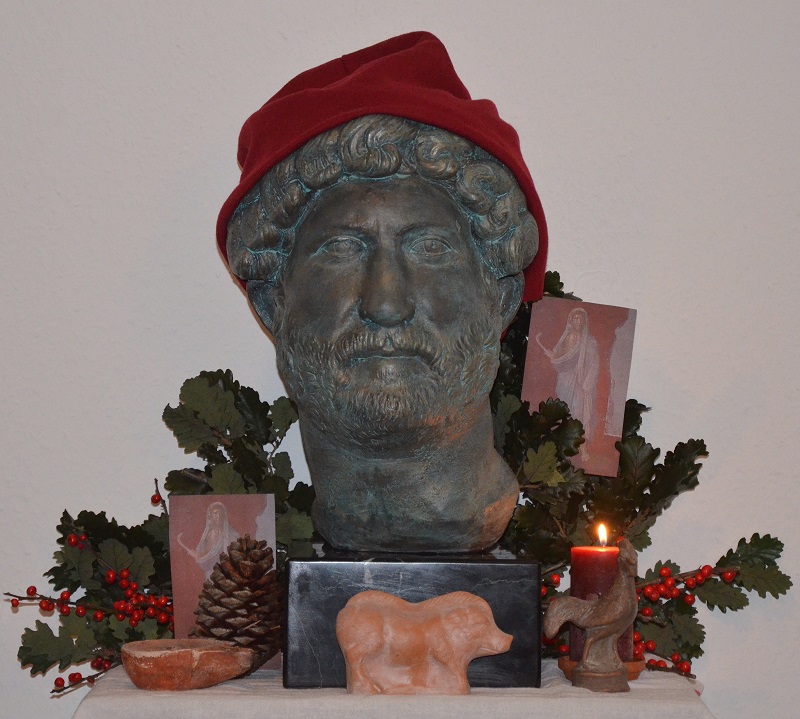
To those that observe, the Friends joyfully say, "Io, Saturnalia."
Saturnalia is traditionally celebrated from December 17 through 23. It was an ancient Roman festival in honor of the agricultural deity, Saturn, that is recognized by some modern pagan sects. He was a mythical king of Italy, who taught his people how to raise crops and behave in civilized manner. (In our Solar System, the ringed gas giant takes its name from this god.) Although the statue of Saturn in his temple on the Roman Forum normally had its feet tied with woolen bonds, it was freed from those restraints during this time. Celebrants also enjoyed a loosening of the normal social conventions. Along with feasting and merry making, a household Saturnalicius princeps (Saturnalia leader) encouraged mischief and pranks. Even slaves were able to join in some of the revels and enjoy greater liberties. Participants exchanged small gifts, especially candles and statuettes. The festivities that Roman poet Gaius Valerius Catullus (84–54 BCE) described as ‘the best of times’ derived from even earlier rituals to ensure fertility during the winter sowing season.
Encompassing the winter solstice, the Saturnalia assured a bountiful harvest and brought great cheer during the darkest time of year, which thereby was transformed into a season of light.


 witter
witter Instagram
Instagram



